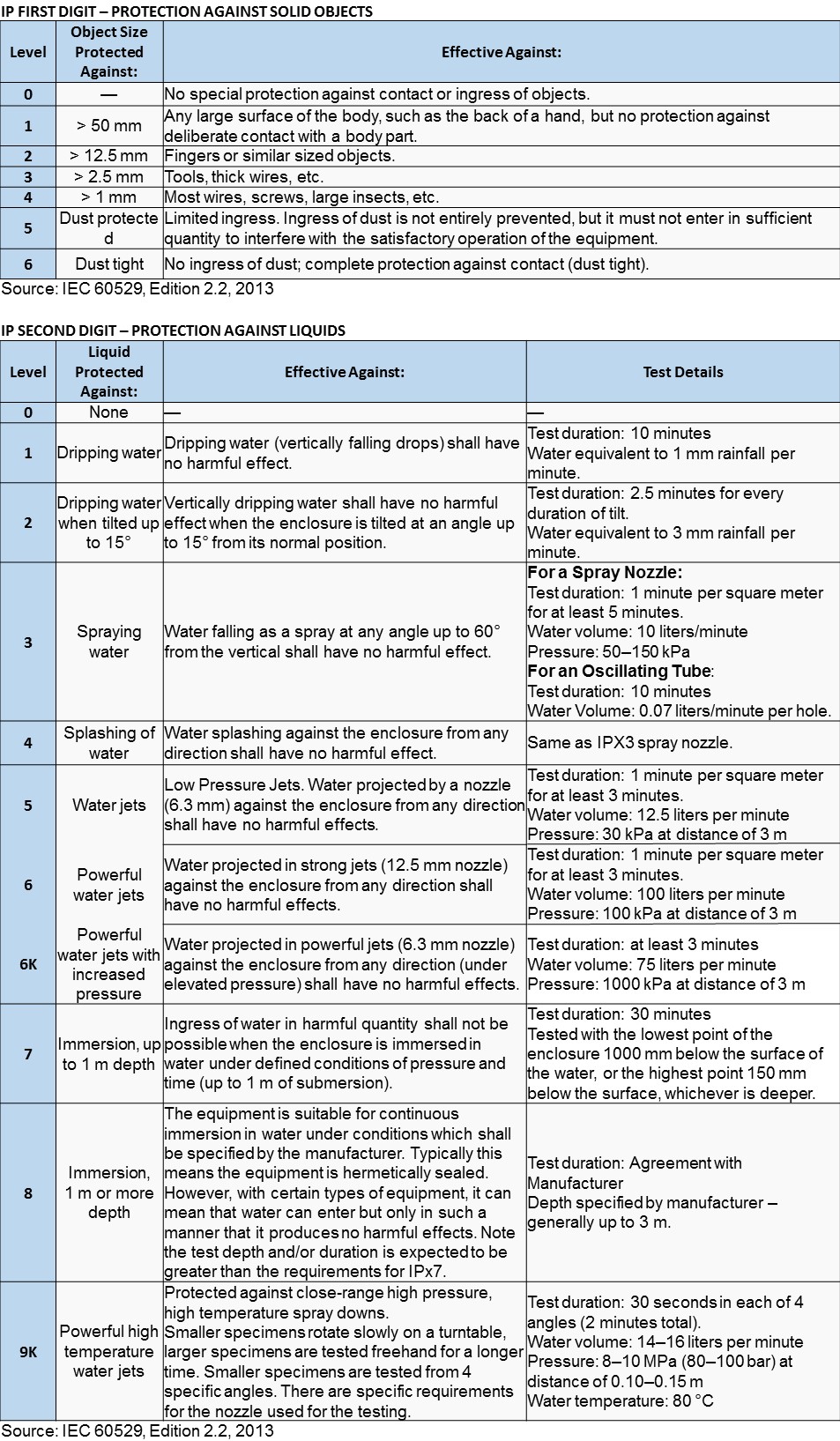The demand for durable consumer electronics is on the rise. You may have heard commercials touting a certain IP rating to prove just how rugged and resistant their latest device is.
Or maybe you were reading the specs of your recent electronics purchase and came across mention of it being “IP65” or something similar. What does this mean and how does the “IP” scale work?
The IP Code (or International Protection rating, also interpreted as Ingress Protection rating) is a standard classification system set up to define the effectiveness of electrical enclosures against the intrusion from moisture and foreign bodies such as tools, dirt and other forms of debris. The ratings are defined by the international standard IEC 60529 and the goal is to provide more detailed information than simply describing a product as “waterproof” or “water resistant”. IP ratings can be found in the specifications of sensors, connectors, power supplies, enclosures, and more.
관련 상품 참조
If you are familiar with NEMA enclosure ratings, IP is very similar to the North American NEMA standards, but realize that the scale is not directly equivalent between the two. NEMA takes additional product features into consideration such as enclosures for hazardous areas and functionality under icing conditions.
How does the IP rating system work? The IP code typically consists of the letters “IP” followed by two digits that have specific meaning. The first digit indicates the level of protection that the enclosure provides against solid foreign objects as well as the protection of people (fingers and hands) from internal parts. The second digit represents the protection level of the equipment inside the enclosure against various harmful forms of moisture such as drips, submersion and even high-pressure wash down. A larger value of each digit generally indicates a greater level of protection.
관련 상품 참조
A standard electrical wall outlet would be rated IP22, meaning it is protected from touch by fingers and objects greater than 12 mm and will not cause a safety hazard when exposed to nearly vertical dripping water. This is usually the minimum requirement for indoor electronic devices. Conversely some of the latest IP68 mobile phones are water resistant enough that they can survive the inevitable spill, splash, jog in the rain, and even (but hopefully not) an unfortunate dip in the toilet. The “6” indicates the phone is completely protected against dust ingress and the “8” means it passed the test of being completely submerged under water to a depth greater than 1 meter and specified by the manufacturer. One popular IP68 mobile phone manufacturer defined their test as submersion in up to 5 feet or 1.5 meters of water for 30 minutes.
The newest addition to the IP rating family is the high pressure wash down IP69K test from the German standard DIN 40050-9. This rating is the highest protection available and is commonly used to certify components for the food industry where equipment must be frequently sanitized. The challenging IP69K test assures that equipment can withstand the powerful 1450 psi water jets that spray at a rate of 4 gallons per minute at a temperature of 80°C or 176°F. If that isn’t intense enough, the nozzle is only 4 - 6 inches away from the test part at 4 different angles and the product is on a rotational table. If the electronic device survives this extreme blast test you can be sure it has a rugged, water tight seal.
When interpreting IP ratings, here are three things to keep in mind:
- If you utilize a product that requires a separate connector cable attachment, you need to ensure the connector cable itself is also rated to withstand the same environment. For example, if you purchase an IP67 proximity sensor that requires a separate power cable and plan to expose it to liquid elements, be sure the connector cable is also rated IP67.
- There are no hyphens in a true IP code so realize if you see IPX-7, for example, it is not a true IP code.
- Higher numbers do not necessarily include fulfillment of all lower number tests underneath. It is probably safe to assume that if an enclosure is rated to withstand powerful jets of water, it is okay against water drips and slow nozzle spray of a lower IP test. But do not be fooled into believing that an IP67 product tested against water immersion is also protected against water jets. The product’s specs need to explicitly list both IP65 and IP67.





